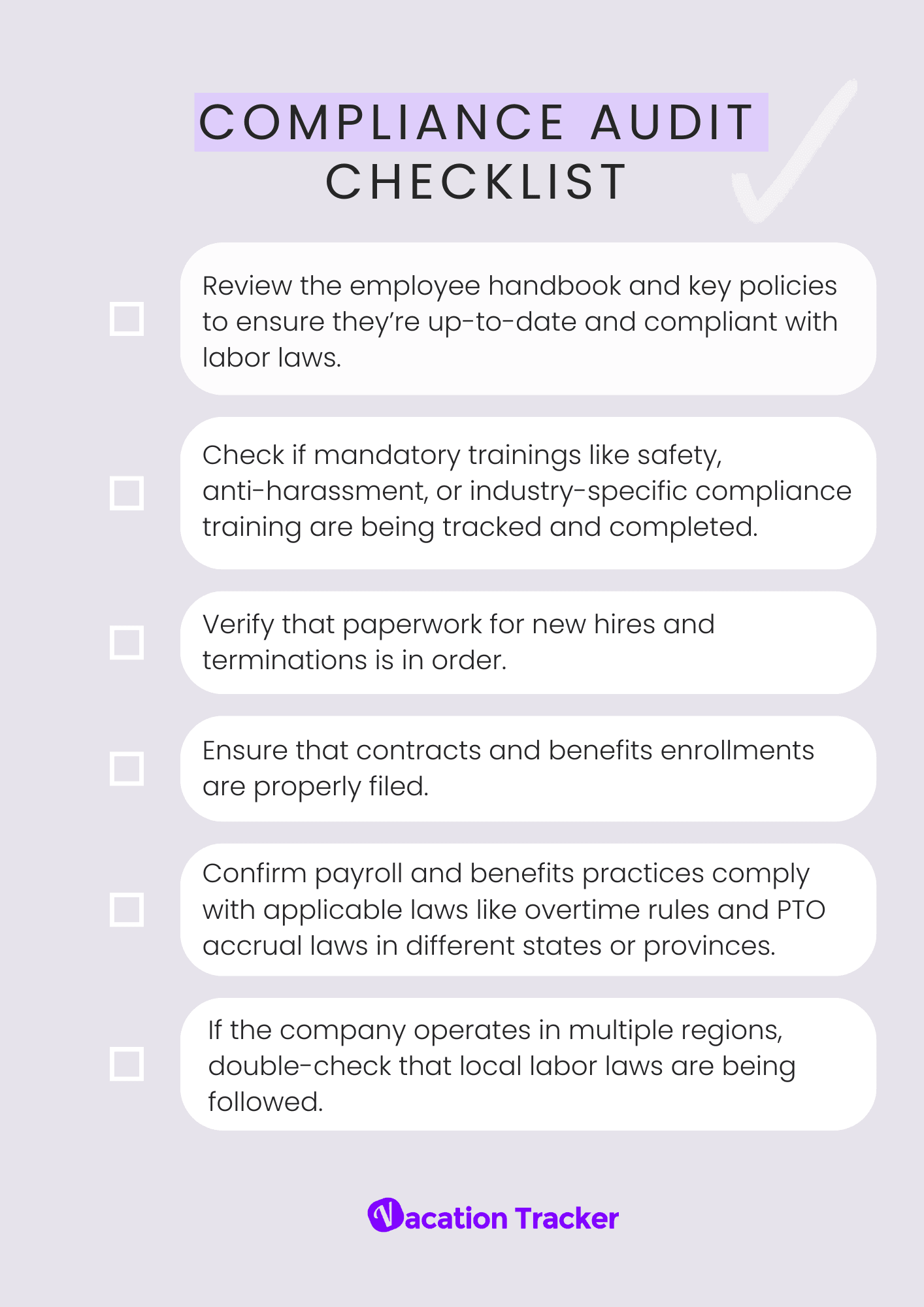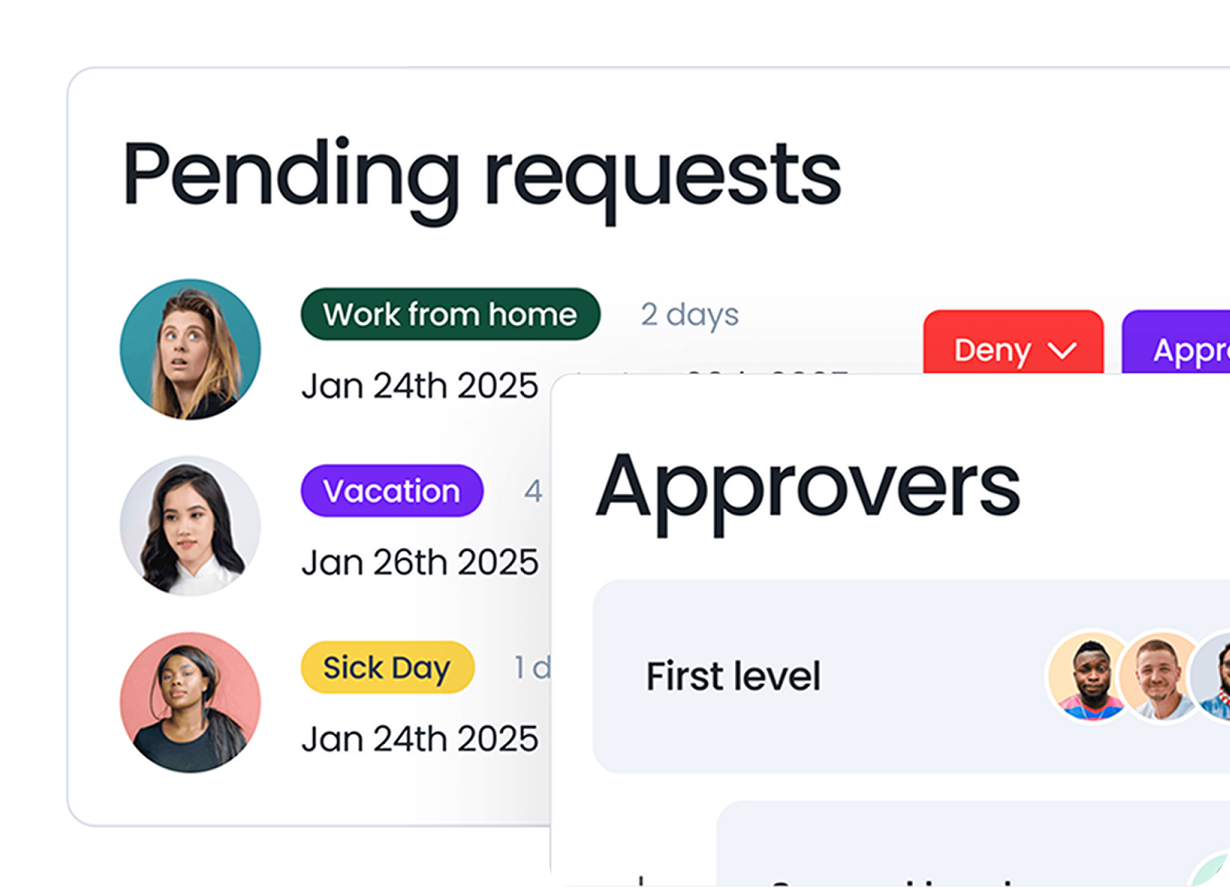Last updated on April 29, 2025
Let’s face the facts: starting your first day as the new HR manager is a lot like starting a new adventure. After all, it’s not just about having a job; it's stepping into a journey filled with exciting challenges, opportunities to learn, and the promise of personal and professional growth. These first 90 days are super important because they set the stage for how successful and comfortable you'll be at the workplace.
If you’re unsure where to begin in your new position, you’re not alone, and we’re here to help. This comprehensive 90-day plan for new HR managers is broken down into clear, time-based phases designed to guide you through your first three months with confidence. Inside, you’ll find practical insights and actionable strategies to help you build credibility, deliver early wins, and lay the groundwork for long-term success.
Let’s get started.
![]()
Days 1–14: Build Relationships
Meet the Team
The first few weeks at any new HR role should be about one thing and one thing only: People.
Start by putting faces to names on your company’s org chart. Focus on building relationships and understanding the business, its mission, values, and culture.
Schedule introductory one-on-ones with your team members, key managers, and other stakeholders across the company and use these conversations to learn about each person’s role, their challenges, and what they expect from HR (that means you!).
Clarify Expectations
Understanding the scope and main objectives of your role is key to planning effectively for success. Identify who your key stakeholders are and build those relationships from day one. Introduce yourself to the leadership team and department heads and clarify early on your manager’s expectations for your role and what a “win” would look like in their eyes. This way, you can know where to start and what to focus on.
Pro Tip: Don’t be afraid to ask a lot of questions. As a newbie, asking questions shows curiosity and can quickly reveal important information. Use these conversations to gather a wishlist of improvements, but resist the urge to implement any big changes just yet. These first two weeks are about understanding and observing, no revolutionizing just yet!
Days 15–29: Understand the Numbers and Stay Compliant
Dive into the Data
Once you’ve met your team, it’s time to start digging into the data.
Begin by identifying key HR metrics and reviewing important insights like turnover rate, employee retention, cost-per-hire, and absenteeism rates. Find out what data you already have and establish some baselines. If important data is lacking, consider setting up simple ways to start capturing it going forward.
For example, if your team is not capturing absenteeism rates or tracking sick days, you’ll want to consider implementing a leave management system to ensure you can monitor how many sick days your team is taking, and if one person or team is taking more than the average. This can indicate low engagement or even potential burnout.
Remember, not all metrics carry equal weight, so learn which the executive team cares about most. For example, a fast-growing tech company may prioritize hiring speed, whereas a more established firm might want to reduce turnover. Talk to your CEO or department leaders about their biggest people-related concerns and identify which metrics truly matter.
Perform a Compliance Audit
Along with metrics, audit the current HR processes and make sure nothing critical is falling through the cracks. Here’s a quick checklist
- Review the employee handbook and key policies to ensure they’re up-to-date and compliant with labor laws.
- Check if mandatory trainings like safety, anti-harassment, or industry-specific compliance training are being tracked and completed.
- Verify that paperwork for new hires and terminations is in order, and that things like contracts and benefits enrollments are properly filed.
- Confirm payroll and benefits practices comply with applicable laws like overtime rules and PTO accrual laws in different states or provinces.
- If the company operates in multiple regions, double-check that local labor laws are being followed.
Pro tip: Not sure if your leave policies are compliant? Check out our leave laws resource for in-depth information on the regulations in your region.

Days 30–59: Set Clear Goals and Upgrade Your Tools
Turn Insights into Strategy
With relationships established and baseline data collected, the next month is about crafting a game plan where you define your goals and equip yourself with the right HR tools to achieve them.
Start by translating the insights from your first month into a few key objectives. Based on your conversations and data analysis, determine what issues need addressing and what opportunities you can leverage.
Make sure to pace yourself and prioritize your goals. You can’t do everything at once. A good approach is to set a couple of quick-win goals that you can achieve in the next 3–6 months and a couple of longer-term goals to build over the next year. Quick wins are typically tasks that take less effort but have a big impact. Your long-term goals should be impactful tasks that require more time and effort.
![]()
For example, if employee engagement and wellness are a concern, a quick win could be introducing a PTO tracking software that builds trust, increases visibility, and gives employees more control over their time off. It takes less than an hour to set up and can support a longer-term goal of shifting the culture toward better work-life balance, ultimately helping to improve retention and productivity.
By the end of week 8, you should have an HR game plan that addresses the immediate needs (low effort, high impact) and lays the groundwork for the future.
Build the Right Toolkit
Now that you’ve set your goals, take a look at the tools and systems currently in use for HR tasks. Do you have the tools to set you up for success?
Do you have an HRIS that houses employee data, or is everything in separate spreadsheets? How are you managing leave requests and PTO tracking right now? What about recruiting and performance management? Are they done via a tool or manually?
Once you understand your company’s workflow and processes, you’ll be able to identify gaps where a modern tool could save time or improve accuracy and build your HR tech stack to support your goals.
One immediate win in many organizations is automating time-off management. If people are still emailing their manager and HR to request vacation and you’re updating an Excel calendar, it’s time to change that. Implementing a dedicated leave management tool like Vacation Tracker can provide instant visibility into who’s off and when, while also eliminating hours of manual admin work from tracking PTO.
Learn how to manage time off without
Tracking Can Be
confusion, delays, or admin headaches. 
Days 60–89: Focus on Short-Term Goals
Implement Quick Wins
In your third month, it’s time to turn plans into action and start checking off early wins. Delivering improvements now builds your credibility and creates momentum for larger initiatives. Even a small fix, like improving an overly complex process that frustrates everyone, can set a positive tone and show that you’re paying attention and making things better.
How Vacation Tracker Is a Win for HR
Leave tracking is one of those areas that often gets overlooked, but it’s a perfect opportunity for a quick win. It’s a small change with a big impact, and upgrading how you manage time off is a smart, visible improvement that benefits everyone.
Vacation Tracker is a centralized, automated leave tracking tool that takes the guesswork out of managing time off.
No more “who’s off when?” confusion. Teams can see availability at a glance, managers get accurate, real-time records, and employees can manage their own leave without jumping through hoops.
That means fewer hours spent on manual admin and more time to focus on long-term priorities. It also positions you as someone who can improve operations, promote transparency, and support a healthier work culture.
And when it comes to common leadership priorities, visibility, efficiency, compliance, and engagement, Vacation Tracker checks every box.
Here’s how our software translates into big wins for HR:
- Improved Leave Visibility: Get a clear, real-time view of your team’s availability. Vacation Tracker keeps all leave requests, approvals, and schedules in one place, so you always know exactly who’s off and when. You can even set up notifications and shared calendars to make sure no one is caught off guard by absences. This transparency means fewer scheduling surprises for leadership and easier workload planning for everyone.
- Less Admin: Vacation Tracker saves your team hours each month by automating time-off processes. It calculates PTO accruals and rollovers automatically, eliminating manual calculations. Less paperwork for HR means you can focus on more strategic work that gets noticed by leadership.
- Better Compliance: Vacation Tracker helps you stay fully compliant with labor laws and company leave policies. You can tailor it to set specific policies for different locations, ensuring local law requirements (like regional holidays or accrual rules) are met. All leave data is stored and exportable in detailed reports, so you have audit-ready records at your fingertips. This makes it easy to handle audits or report to management with confidence that everything is accurate and documented.
- Increased Team Satisfaction: An easy leave process means happier employees. Vacation Tracker makes requesting time off simple since employees can submit requests and check their PTO balance anytime without bugging HR. Requests and approvals happen faster, so employees get quick responses instead of waiting for emails. The result? Your team feels heard and empowered, and morale goes up.
Share Success
Don’t be shy about sharing the successes of your first efforts. For instance, if your new leave management system reduced the average time to approve a PTO request from 2 days to same day, share that data. If employee feedback on the revamped onboarding process is positive, let the team know. The goal is not to pat yourself on the back, but to create enthusiasm for the changes happening. When people see progress, it builds confidence in HR’s value and encourages a culture of continuous improvement.
Pace Yourself
As you power through your initiatives, be mindful not to take on too much at once. It’s better to fully deliver one project that shows results than to juggle ten projects badly. Pace the rollout of changes so the organization can adjust to them. And when something doesn’t work as expected, be honest and adaptable. Showing that you can iterate and improve on the fly will further build trust in your leadership.
Day 90: Share Your HR Plan
Share your Plan
You’ve reached the 90-day mark. Congratulations!
Now it’s time to tie everything together and set the stage for the future. The 3-month mark is an ideal time for presenting a comprehensive HR action plan to your leadership team.
Over the past 90 days, you’ve gathered a wealth of information from one-on-one conversations, data analysis, and daily observations. Shape your plan based on those key findings and use those insights to justify the changes you’d like to implement.
Clearly articulate the HR initiatives and goals you propose for the next 6 to 12 months. This is essentially a road map of what you plan to do going forward. Break it down into main focus areas like Talent Acquisition, Culture & Engagement, Compensation & Benefits, Compliance & HR Operations, and explore your key initiatives for improving each, identifying priorities as you go. Your action plan should strike a balance between showcasing the quick wins you’ve already achieved and painting the vision for long-term improvements.
Ask for Feedback
An effective HR action plan isn’t created in a silo. As you build your plan, ask for feedback from key stakeholders to make it more robust and easier to get buy-in.
During the presentation, encourage questions and suggestions to make it feel like a collaborative, shared vision rather than just HR’s plan. When people see their feedback reflected, they’re more likely to support the initiatives.
Keep Going: What Comes After Day 90
Your first 90 days might be complete, but the journey as an HR manager has just started.
To continue on this exciting path, you’ll want to regularly check in on your initiatives, measure results, and tweak your approach as needed.
Remember to:
- Keep tracking your metrics: Remember those HR metrics you identified back in the first month? Don’t put them on a shelf. Review them monthly or quarterly and share relevant data with leadership to show ongoing progress.
- Ask for feedback regularly: Great HR managers never stop listening. Continue the practice of asking for employee and manager feedback beyond the initial onboarding period. This could mean quarterly meetings, short surveys or simply encouraging an open-door policy for suggestions.
- Be adaptable: Business goals can evolve, so HR must as well. Be prepared to adjust your action plan when necessary, responding to real feedback and data in a thoughtful way.
- Ensure ongoing compliance: Continuously monitor compliance changes, including new labor laws or regulations, so you can update policies or practices proactively.
- Celebrate progress: As time goes on, don’t forget to celebrate milestones and report back on progress to the broader team. This not only keeps everyone informed but also reinforces the positive changes and keeps employees engaged with HR’s role.
By building strong relationships, basing decisions on meaningful data, leveraging the right tools, and continuously learning and adjusting, you’ll establish yourself as a trusted, effective HR leader in your organization.
And of course, leave visibility plays a key role in that. When you know who’s off and when, without chasing spreadsheets, you’re free to focus on bigger goals.
Try Vacation Tracker free and make smarter leave management part of your long-term strategy.

Claudia
Claudia is an experienced marketer with a passion for writing and creating engaging content that connects with readers.




